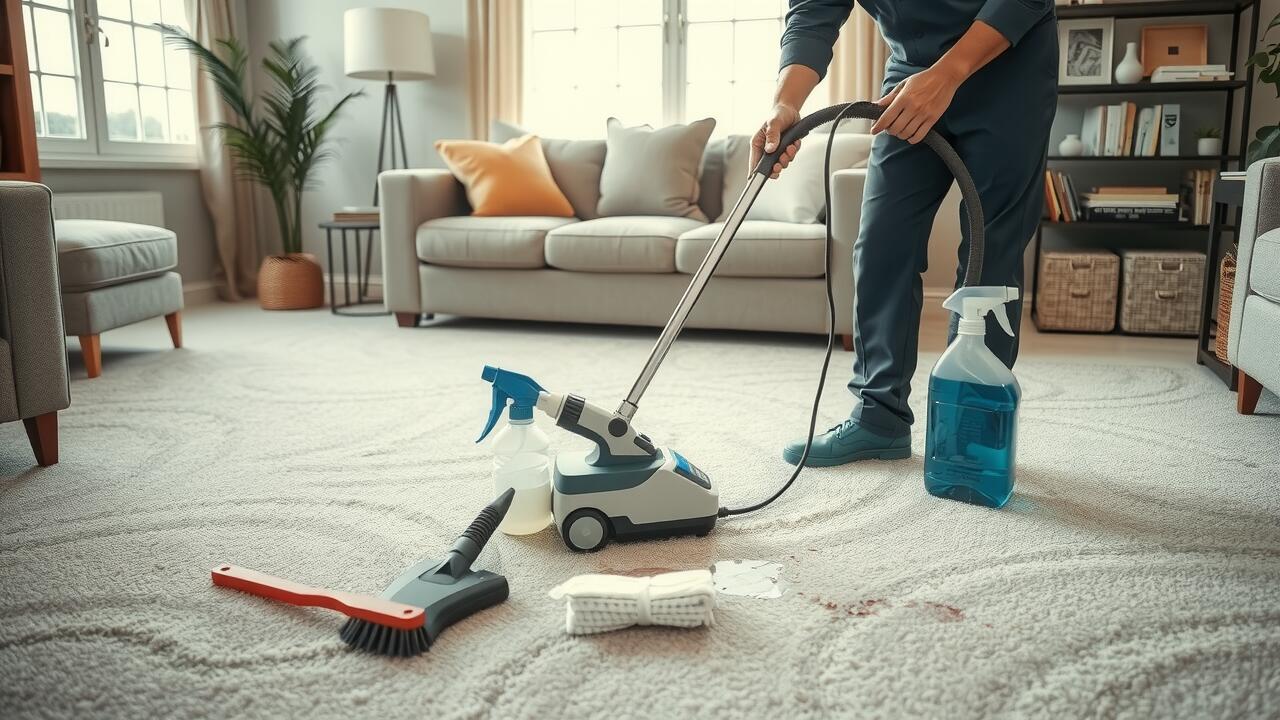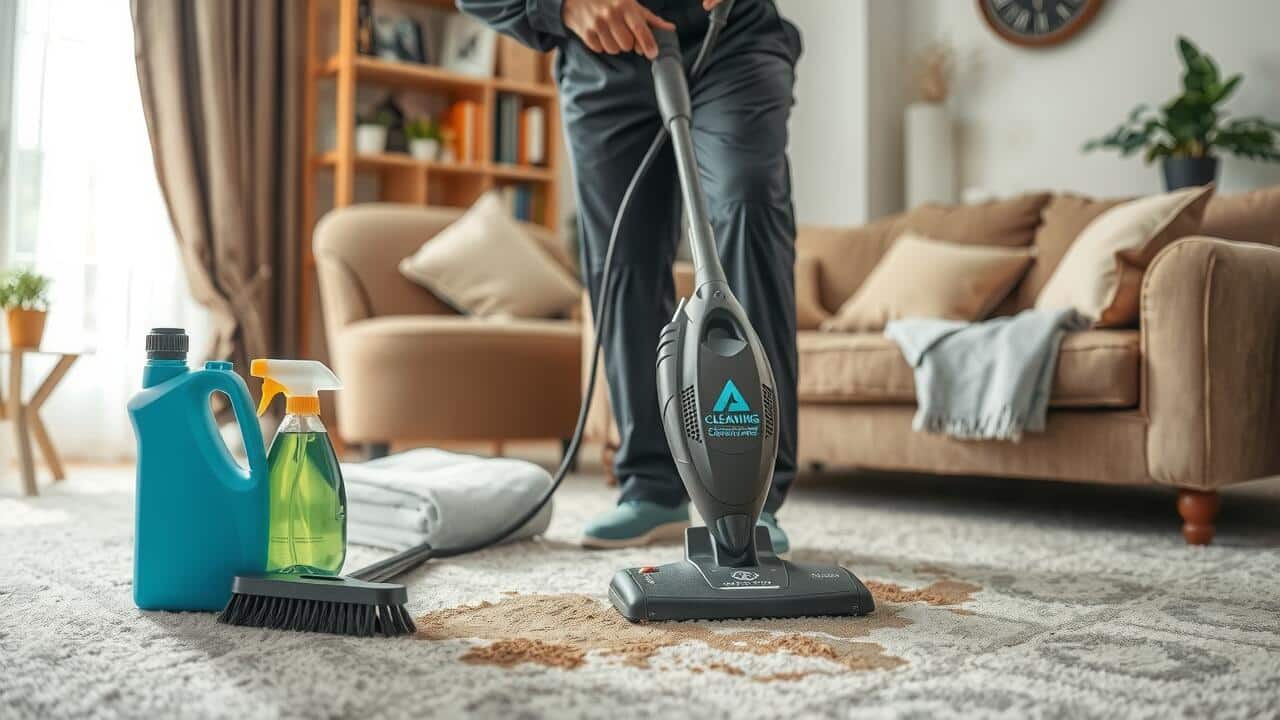Table Of Contents
Techniques for Different Stain Types
Different stains require tailored techniques for effective removal. For oil-based stains, such as grease or makeup, it’s best to blot the area with a paper towel to absorb excess substance. Applying a mixture of dish soap and warm water can help break down the oil. For water-based stains, such as fruit juice or soda, using a solution of white vinegar and water is often effective. Blot the area gently to lift the stain without damaging the fibers, as aggressive scrubbing can worsen the situation.
Carpet Spot Cleaning also involves addressing tougher stains, like ink or dye, with specialized products designed for such materials. It’s essential to act quickly to prevent the stain from setting. Testing any cleaning solution on a hidden part of the carpet is a crucial step. This ensures that the product won’t cause fading or discoloration. Using a clean cloth to dab the solution onto the stain can maximize effectiveness while minimizing further damage to the carpet.
Approaches for Food and Beverage Stains
When tackling food and beverage stains on carpets, immediate action is crucial. Begin by blotting the stain gently with a clean white cloth or paper towel to absorb as much liquid as possible. Avoid rubbing, as this can push the stain deeper into the fibers. Depending on the nature of the spill, a solution of warm water and mild dish soap can be effective for many types of stains. Apply the mixture using a cloth, again blotting rather than scrubbing. Regular Carpet Spot Cleaning can help mitigate staining issues before they become entrenched.
For more challenging stains, like red wine or coffee, a dedicated carpet stain remover might be necessary. Look for products specifically designed for these types of marks. Test any cleaning solution on an inconspicuous area first to ensure colorfastness. After applying the cleaner, blot the area until the stain is lifted, then rinse with a little clean water. Proper techniques in Carpet Spot Cleaning will prevent more extensive damage to your carpet while keeping it looking fresh.
Dealing with Pet Stains
Pet stains can be particularly challenging to remove due to their unique nature. The first step in addressing these stains involves promptly blotting the area with a clean cloth to absorb any excess moisture. Avoid rubbing the stain, as this may spread it further into the carpet fibers. Once the area is prepped, a solution of warm water and mild dish soap can be applied. This gentle mixture helps break down the stain without damaging the carpet.
After treating the stain, odor removal becomes essential. Pet urine often leaves lingering smells that can attract pets to the same spot. For effective odor removal, a mixture of equal parts white vinegar and water can be poured over the area after the initial cleaning. Let this solution sit for a few minutes before blotting it up. Carpet Spot Cleaning in this manner not only addresses the visible stain but also neutralizes unpleasant odors, making the carpet fresh again.
Steps to Effectively Remove Odors
To effectively remove odors from carpets, begin by addressing the source of the smell. This often involves thoroughly cleaning the affected area with a suitable carpet cleaning solution. For pet odors, using an enzymatic cleaner can break down the substances responsible for the lingering smells. Always test any cleaner on a small, inconspicuous area of the carpet to ensure it does not cause discoloration or damage.
After treating the stain, it’s important to deodorize the carpet. Sprinkling baking soda over the area can help absorb any remaining odors. Allow the baking soda to sit for several hours or overnight before vacuuming it up. Regular carpet spot cleaning will not only keep your carpets looking fresh but also help in preventing odor build-up over time.
Preventative Measures
Maintaining a clean carpet requires regular upkeep to prevent stains from becoming permanent fixtures. Implementing a routine vacuuming schedule helps remove dirt and debris that can lead to discoloration. Additionally, treating spills promptly can minimize the risk of stubborn spots forming. Utilizing protective solutions designed for carpets can create a barrier against stains, making future carpet spot cleaning more manageable.
Regularly scheduled deep cleaning should also be part of your maintenance plan. Hiring professional services or using steam cleaners at home can refresh carpets and eliminate built-up soil. Keeping traffic areas well-maintained ensures that spots do not settle in and become harder to remove later. By integrating these practices into your routine, you foster a healthier carpet environment and reduce the need for extensive cleaning efforts down the line.
Implementing Regular Maintenance
Regular maintenance is essential in preserving the appearance of carpets and minimizing the chances of stains becoming permanent. Implementing a routine vacuuming schedule removes dirt and debris, preventing them from embedding into the fibers. Additionally, spot cleaning as soon as a stain occurs will significantly improve the chances of complete removal. Keeping a carpet cleaner or spot treatment solution on hand ensures quick action can be taken when spills happen.
Incorporating preventative measures can also help maintain the quality of carpets. Using area rugs in high-traffic zones protects the carpet underneath and limits wear. Regular professional cleanings not only refresh the carpet’s look but also extend its lifespan. By prioritizing these steps, the need for extensive Carpet Spot Cleaning can be reduced, resulting in a fresher and cleaner environment.
FAQS
What are the most common types of stains on carpets?
The most common types of stains on carpets include food and beverage spills, pet stains, ink, paint, and dirt or mud. Each type may require a different approach for effective removal.
How can I remove coffee stains from my carpet?
To remove coffee stains, blot the area with a clean cloth to absorb excess liquid, then mix one tablespoon of liquid dish soap, one tablespoon of white vinegar, and two cups of warm water. Apply the solution to the stain, blot frequently, and rinse with cold water.
What should I do if my pet has an accident on the carpet?
First, blot up as much of the liquid as possible with paper towels. Then, use a mixture of water and white vinegar or a specialized pet stain cleaner to saturate the area, followed by blotting until the stain is removed. Finally, rinse the area with clean water and let it dry.
How can I prevent future stains on my carpet?
Preventative measures include using area rugs in high-traffic areas, immediately cleaning spills, using carpet protectors, and scheduling regular professional carpet cleaning to maintain the carpet’s condition.
Is there a way to remove odors from carpets after spills or accidents?
Yes, to remove odors, sprinkle baking soda over the affected area after cleaning, let it sit for several hours or overnight, and then vacuum it up. This helps absorb any lingering smells.



